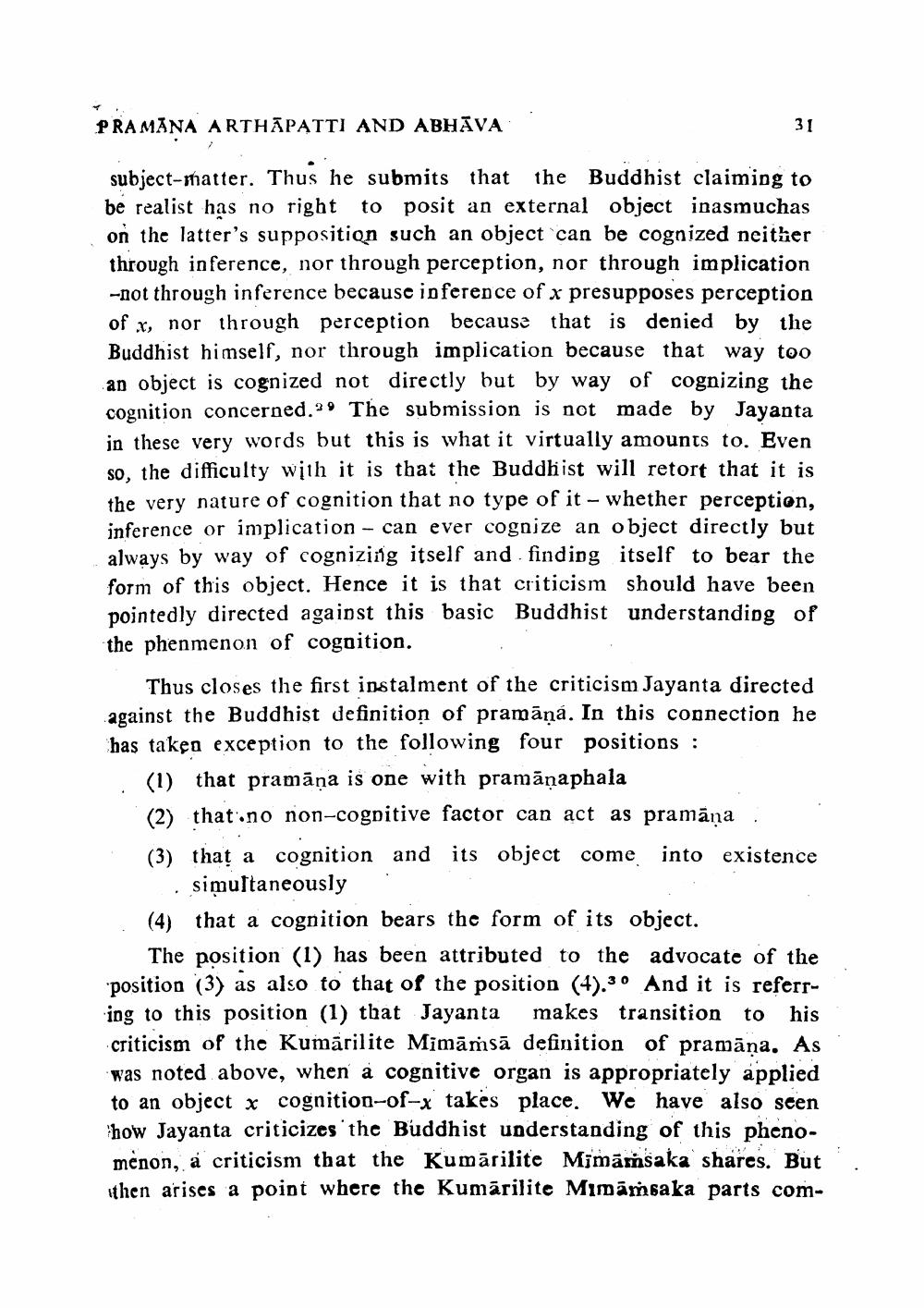________________
PRAMANA ARTHĀPATTI AND ABHĀVA.
31
subject-matter. Thus he submits that the Buddhist claiming to be realist has no right to posit an external object inasmuchas on the latter's supposition such an object can be cognized neither through inference, nor through perception, nor through implica -not through inference because inference of x presupposes perception of x, nor through perception because that is denied by the Buddhist himself, nor through implication because that way too an object is cognized not directly but by way of cognizing the cognition concerned.39 The submission is not made by Jayanta in these very words but this is what it virtually amounts to. Even so the difficulty with it is that the Buddhist will retort that it is the very nature of cognition that no type of it - whether perception, inference or implication - can ever cognize an object directly but always by way of cognizing itself and finding itself to bear the form of this object. Hence it is that criticism should have been pointedly directed against this basic Buddhist understanding of the phenmenon of cognition.
Thus closes the first instalment of the criticism Jayanta directed against the Buddhist definition of pramāna. In this connection he has taken exception to the following four positions :
(1) that pramāņa is one with pramānaphala (2) that.no non-cognitive factor can act as pramāņa ; (3) that a cognition and its object come into existence
. simuftaneously (4) that a cognition bears the form of its object.
The position (1) has been attributed to the advocate of the position (3) as also to that of the position (4).3° And it is referring to this position (1) that Jayanta makes transition to his criticism of the Kumārilite Mimāmsā definition of pramāna. As was noted above, when a cognitive organ is appropriately applied to an object x cognition-of-x takes place. We have also seen how Jayanta criticizes the Buddhist understanding of this phenomenon, a criticism that the Kumārilite Mjmāmsaka shares. But then arises a point where the Kumārilite Mimāṁsaka parts com




